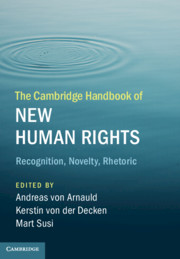Book contents
- The Cambridge Handbook of New Human Rights
- The Cambridge Handbook of New Human Rights
- Copyright page
- Contents
- Figures
- Contributors
- Acknowledgements
- Introduction
- Part I Cross-Cutting Observations
- Part II Public Good Rights
- Part III Status Rights
- Part IV New Technology Rights
- The Right to Internet Access
- The Right to Be Forgotten
- 22 The Right to Be Forgotten
- 23 The RTBF 2.0
- Reproductive Rights
- Genetic Rights
- Part V Autonomy and Integrity Rights
- Part VI Governance Rights
- Index
22 - The Right to Be Forgotten
from The Right to Be Forgotten
Published online by Cambridge University Press: 04 January 2020
- The Cambridge Handbook of New Human Rights
- The Cambridge Handbook of New Human Rights
- Copyright page
- Contents
- Figures
- Contributors
- Acknowledgements
- Introduction
- Part I Cross-Cutting Observations
- Part II Public Good Rights
- Part III Status Rights
- Part IV New Technology Rights
- The Right to Internet Access
- The Right to Be Forgotten
- 22 The Right to Be Forgotten
- 23 The RTBF 2.0
- Reproductive Rights
- Genetic Rights
- Part V Autonomy and Integrity Rights
- Part VI Governance Rights
- Index
Summary
The expression ‘the right to be forgotten’ entered the global human rights landscape during the twenty-first century. It emerged simultaneously and independently in various parts of the globe – Europe, South America and Asia. It is related to the idea of forgiveness, entitling an individual to ‘control’ her past on the Internet in relation to facts and situations which are true and accurate, but which this individual would prefer to no longer be electronically accessible to the others. This entitlement is to be contrasted with the right to the erasure of data, which refers to inaccurate or untruthful information. The right to be forgotten is an entitlement for an individual to request, from the data controller, the blocking of access to or deletion of data lawfully published in the original sources. This entitlement strengthens with the passage of time, whereas the right to data erasure emerges immediately after debatable data is made electronically available.
- Type
- Chapter
- Information
- The Cambridge Handbook of New Human RightsRecognition, Novelty, Rhetoric, pp. 287 - 299Publisher: Cambridge University PressPrint publication year: 2020
- 5
- Cited by



